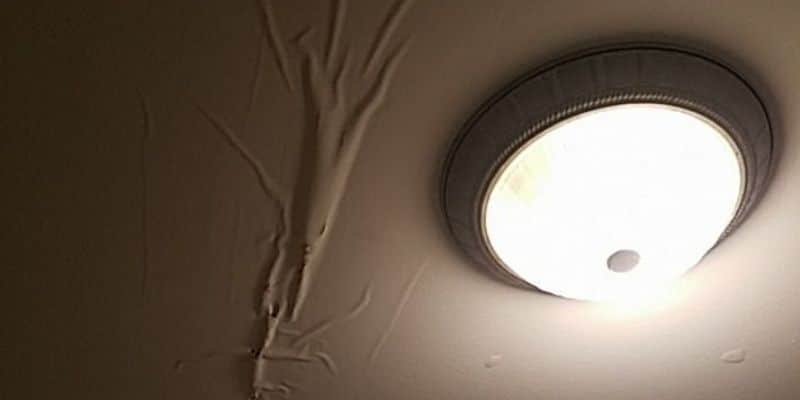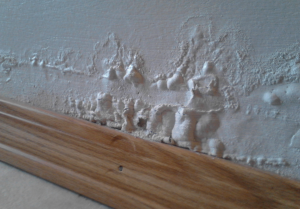Just how do you really feel with regards to Water Stains on Walls?

Water discolorations on walls are not pleasurable to the eyes. Your residence needs to lack stains on the wall surfaces, roofing, or floorings. That is the excellent state of a house and its structures. Yet, often it seems almost inescapable to experience water discolorations on walls in houses.
House owners living in moist areas frequently deal with the fear of water spots on wall surfaces. With precise and also well-rounded info on the reasons of water discolorations and timely repair service procedures, you will always be a step in advance of such events.
3 Common Reasons For Water Discolorations on Wall Surfaces
Contrary to popular belief, water spots on wall surfaces do not constantly originate from poor building materials. There are a number of root causes of water discolorations on wall surfaces. These include:
Poor Drainage
When making a structure plan, it is important to make sure appropriate water drainage. This will avoid water from seeping into the wall surfaces. Where the drainage system is blocked or missing, underground dampness accumulates. This links to too much moisture that you see on the wall surfaces of your building.
So, the leading source of wet walls, in this case, can be an inadequate drainage system. It can additionally be because of bad monitoring of sewage pipes that run through the structure.
Moist
When hot wet air meets dry cold air, it triggers water beads to form on the wall surfaces of structures. This takes place in washrooms as well as kitchen areas when there is heavy steam from food preparation or showers. The water beads can stain the surrounding walls in these parts of your home as well as spread to various other areas.
Moist or condensation affects the roofing and wall surfaces of buildings. When the wall surface is damp, it produces an ideal atmosphere for the development of microbes as well as fungis.
Pipe Leaks
Many residences have a network of water pipes within the wall surfaces. This makes sure that the pipes are well away from the reach of harmful rats. It always raises the practicality of such pipes, as there is little oxygen within the wall surfaces. This discourages rust.
Yet, a drawback to this is that water leakage impacts the wall surfaces of the building as well as creates prevalent damages. An indicator of malfunctioning pipes is the appearance of a water discolor on the wall surface.
Water Discolorations on Wall Surface: Repair Tips
Homeowners would usually desire a quick fix when dealing with water stains. Yet, they would certainly quickly understand this is disadvantageous as the water discolorations reoccur. So, here are a few helpful suggestions that will certainly lead you in the repair service of water discolorations on wall surfaces:
Pro Suggestion
A houseplant in your house also increases its moisture. So, if the house is currently damp, you may intend to introduce houseplants with minimal transpiration. An instance of appropriate houseplants is succulents.
Final thought
No one desires to have water stains on wall surfaces in their home, it can take place to the best of us. This write-up gives you utilize, as you now recognize how to manage this accident if it does take place.
It is always best to hire professional solutions to help deal with the damages in your house.
In some cases it appears practically inevitable to experience water spots on wall surfaces in residences.
In contrast to prominent idea, water stains on wall surfaces do not constantly stem from poor structure products. There are several causes of water discolorations on wall surfaces. The water beads can stain the bordering walls in these parts of your house and also spread to other areas.
Below are a few valuable pointers that will certainly guide you in the repair service of water discolorations on walls:
CHECKING FOR WATER DAMAGE
Water damage can be costly, and it may begin before you even notice the first signs of trouble. Water damage can cause mold and mildew in your walls and floors, which can create an abundance of health concerns for your family. It can also lead to costly repairs of various appliances and general home fixtures. To avoid the pricey consequences of water damage, here are Warner Service’s top 5 places you should check:
The walls – The easiest place to spot the beginnings of water damage is on the walls and ceilings of your home. If water damage is present, there will most likely be water stains, especially around the windows and doorframes, and/or cracks in the drywall. If a stain looks unusual (discolored to brown, black or gray, raised texture), has a swollen appearance or is soft to the touch, contact a professional immediately. The pipes – To avoid water damage, consistently check the pipes in your kitchen (especially the dishwasher and ice maker), bathrooms, laundry room (specifically washing machines) and basement for corrosion, leaks and water stains. Pay special attention to where the pipes connect in your home and the location of caulking around the bathroom fixtures, including toilets, sinks, showers and tubs. Missing or loose caulking and grout could be signs of leaking water. This seepage can also quickly cause mold and rust, so double check your water heater and tank for wet spots on the floor. The floor – Water damage is very easy to spot on the floor. Look for any warping or buckling of the material, especially in the basement. If your home has wood flooring, look for bright white or dark stains. If your home has carpeting, keep it dry and clean. A damp carpet that smells of mold could cause water damage and health problems. To avoid this, consider installing floor pans under your appliances to help prevent damages from small, slow and undetected leaks. The basement and attic – If your basement or attic smells odd check for mold and mildew around the area, especially the valley where the roof meets. While you are inspecting those areas, check for wall cracks, floor stains, rust and dampness in the insulation. If you live in a colder and/or rainier climate, perform routine checks for water damage from melting snow or ice and rain. The exterior – Check the roof for damaged flashing and missing, cracked or curled shingles. There should also be no standing water anywhere outside your home. This could be caused by puddles, leaky rain gutters or hoses, poor drainage, or short gutter spouts. Invest in a sump pump system or water flow monitoring system, and perform routine maintenance on these outdoor appliances to avoid indoor water damage.

Do you enjoy reading up on Water Stains on Walls? Create a remark down the page. We would be pleased to listen to your reactions about this blog post. We hope that you come back again before long. Do you know about somebody who is excited about the niche? Feel free to promote it. Thanks for going through it.
Resolve today, dial!